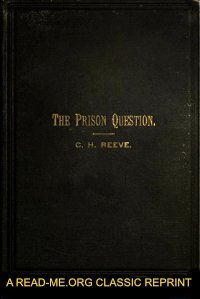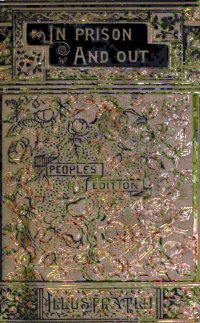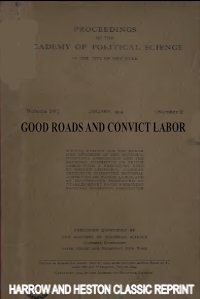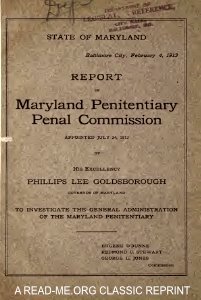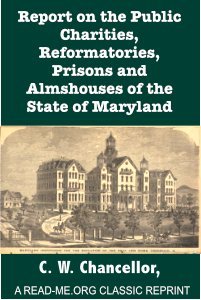Edited by Sarah Hean, Berit Johnsen, Anu Kajamaa and Laure Kloetzer.
Supporting Offender Rehabilitation. This Open Access edited collection seeks to improve collaboration between criminal justice and welfare services in order to help prepare offenders for life after serving a prison sentence. It examines the potential tensions between criminal justice agencies and other organisations which are involved in the rehabilitation and reintegration of offenders, most notably those engaged in mental health care or third sector organisations. It then suggests a variety of different methods and approaches to help to overcome such tensions and promote inter-agency collaboration and co-working, drawing on emerging research and models, with a focus on the practice in European and Scandinavian countries. For academics and practitioners working in prisons and the penal system, this collection will be invaluable.
Cham: Palgrave Macmillan, 2021. 475p.
By Sarah Tarlow and Emma Battell.
This open access book is the culmination of many years of research on what happened to the bodies of executed criminals in the past. Focusing on the eighteenth and nineteenth centuries, it looks at the consequences of the 1752 Murder Act. These criminal bodies had a crucial role in the history of medicine, and the history of crime, and great symbolic resonance in literature and popular culture. Starting with a consideration of the criminal corpse in the medieval and early modern periods, chapters go on to review the histories of criminal justice, of medical history and of gibbeting under the Murder Act, and ends with some discussion of the afterlives of the corpse, in literature, folklore and in contemporary medical ethics. Using sophisticated insights from cultural history, archaeology, literature, philosophy and ethics as well as medical and crime history, this book is a uniquely interdisciplinary take on a fascinating historical phenomenon.
Lowman. Palgrave (2018) 277 pages.
By Floris Tomasini.
Posthumous Punishment, Harm and Redemption over Time. “In the main, this book is a cross-fertilisation of history and philosophy in the broadest possible sense. Ideas of death, posthumous harm, punishment and redemption germinate in both the conceptual ground of philosophical analysis and the empirical ground of historical case study.”
Palgrave (2017) 106p.
By Lucy Series.
“The community is a complicated place, easier to define by what it is not (a hospital) than what it is. Successive waves of post-carceral policy have deposited different care structures and settings on its shores. There are the first-wave quasi-institutions, which still predominate in the care of older people: residential care homes and nursing homes. Then there are second wave quasi-domestic services, aspiring to break free of our institutional heritage: ‘supported living’, ‘independent living’, sheltered housing, and other kinds of ‘housing with support.”
Bristol University Press (2022) 318p.
By D. Morris Kurtz
Its Facilities and Resources. For reasons of their own, the publishers have been pleased to omit the sketches relating to the large axle manufactories of Sheldon & Co., in the Auburn Prison and on Sheldon Avenue ; the shoe manufactories of Dunn, Barber & Co., in the Auburn Prison and on Garden street ; the hollow ware manufactory of Jones & Merritt, Auburn Prison ; the hame manufactory of Hayden & Boyd, Auburn Prison, and several smaller concerns (manufacturing and mercantile), for which I can only express sorrow.
Kurtz publishing (1884) 159p.
By Charles H. Reeve.
A theoretical and philosophical review of some matters relating to crime, punishment, prisons, and reformation of convicts. With a glance at mental, social and political conditions; and some suggestions about and the prevention of crime and the production of causes, and the prevention of crime and the production of criminals.
Knight and Leonard (1890) 206 pages.
By Tighe Hopkins
An Unofficial View Of Prison And The Prisoner. “Imprisonment, its effects upon the prisoner (in prison and after prison) and the prejudice it creates agamst him in the pubHc mind these are my chief topics. With imperfections of which I am extremely conscious, the book represents a study of some years' duration, a study rendered difficult for the onlooker by this fact above others, that he does not view the life of prison from within.”
Boston. Little Brown (1913) 345 pages.
Edited by Ksenya Kiebuzinski and Alexander Motyl.
A Sourcebook. After Germany invaded the Soviet Union in 1941, the Soviet secret police, the NKVD, executed a staggering number of political prisoners in Western Ukraine-somewhere between 10,000 and 40,000-in the space of eight days, in one of the greatest atrocities perpetrated by the Soviet state. Yet the Great West Ukrainian Prison Massacre of 1941 is largely unknown. This sourcebook aims to change that, offering detailed scholarly analysis, eyewitness testimonies and profiles of known victims, and a selection of fiction, memoirs, and poetry that testifies to the lasting impact of the massacre in the collective memory of Ukrainians.
Amsterdam University Press. (217) 433 pages.
By Harriette B. Gunn.
Were John Howard alive to-day, he would rejoice over the development of the prison reforms he inaugurated . He would be surprised at the Prisoner’sAid Societies, the Parole Boards, the Hope Halls, the International Prison Congress meeting annually to discuss prison problems, , and the many changes of the new system of prison management. Praise God for the humanity that now exists..
Christopher publishing (1922) 301 pages.
by David Best.
The Role of the Social Contagion of Hope. This is the first book that uses the latest research evidence to build guidance on community-based rehabilitation with the aim of challenging stigma and marginalisation. The case studies discussed, and a strengths-based approach, emphasize the importance of long-term recovery and the role that communities and peers play in the process. Best examines effective methods for community growth, offers sustainable ways of promoting social inclusion and puts forward a new drug strategy and a new reform policy for prisons.
Policy Press (2019) 234 pages.
Edited by Clare Anderson.
Between 1415, when the Portuguese first used convicts for colonization purposes in the North African enclave of Ceuta, to the 1960s and the dissolution of Stalin’s gulags, global powers including the Spanish, Dutch, Portuguese, British, Russians, Chinese and Japanese transported millions of convicts to forts, penal settlements and penal colonies all over the world. A Global History of Convicts and Penal Colonies builds on specific regional archives and literatures to write the first global history of penal transportation. The essays explore the idea of penal transportation as an engine of global change, in which political repression and forced labour combined to produce long-term impacts on economy, society and identity. They investigate the varied and interconnected routes convicts took to penal sites across the world, and the relationship of these convict flows to other forms of punishment, unfree labour, military service and indigenous incarceration. They also explore the lived worlds of convicts, including work, culture, religion and intimacy, and convict experience and agency.
Bloomsbury Academic (2018) 406 pages.
By Sarah Tarlow.
”The story of Tom Otter, a murderer who was executed and gibbeted in 1806, has many striking features. Not least, this form of brutal and bodily post-mortem punishment seems rather anachronistic during a period often described in terms of increasing gentility and humanity. It took place within the legal context of the Murder Act (1752), which specified that the bodies of murderers had to be either dissected or hung in chains. Other aggravated death penalties were applied to those convicted of treason and suicide. A number of common misconceptions about the gibbet need to be corrected.” Palgrave (2017) 163p.
By Graeme R. Newman.
This is a classic reprint of the original edition of The Punishment Response, originally published in 1976. An acclaimed treatise on the history, philosophy and psychology of punishment. "...read with enormous appreciation for its erudition and method of analysis..." -- Michel Foucault.
Harrow and Heston Classic Reprint. 1985.312p.
By Dorothea Lynde Dix.
“ Society, during the last hundred years, has been alternately perplexed and encouraged, defeated and successful, respecting the two great questions— how shall the criminal and pauper be disposed of, in order to reduce crime and reform the criminal on the one hand, and, on the other, to diminish pauperism and restore the pauper to useful citizenship 1 Though progress has been made, through the efforts of energetic and enlightened persons, directed to the attainment of these ends, all know that society is very far from realizing their accomplishment. We accord earnest and grateful praise to those who have procured the benefits at present possessed ; and, with careful zeal, we would endeavor to advance a work, which succeeding generations must toil to perfect and complete. Moralists and philosophers, with pietists and philanthropists, have urged upon "communities the truer course of employing early preventive measures, rather than expend the energies, at a late period, in futile attempts to govern and lead by correct and virtuous habits, the long-time criminal, and the life-long indolent and ignorant
Boston : Printed by Munroe & Francis, 1845. 108p.
By C. W. Chancellor.
Excerpt from Report on the Public Charities, Reformatories, Prisons and Almshouses of the State of Maryland, by C. W. Chancellor, M.D., Secretary of the State Board of Health, Made to His Excellency, John Lee Carroll, Governor, July, 1877, by C.W. Williams, and the Maryland State Board of Health.
Frederick, MD: Baughman Brothers, 1877. 208p.
By Mary Carpenter.
“The English and the Irish Convict Systems -were both founded on the Act of Parliament of 1853. The object of that Act ^vaa to make such changes in the system adopted towards Convicts, as would prepare them for discharge in oiu' own country, since our Colonial provinces were virtually closed against them, "Western Australia only consenting still to receive a small number annually. "We have seen that in England the system has hitherto been a failure, but have traced that failure, not to the principles on which that and the subsequent one of 1857 were founded, but to certain omissions and additions which were incompatible with the successful working of the principles. We now proceed to the examination of the Irish Convict System, which has fully developed the principles of both those Acts. The results of the ten years during which it has been in operation demonstrate, beyond any possibility of doubt to an impartial observer, not only the truth of tlio principles embodied in the Acts of Parliament, but also of those moral principles which are so embodied in it as to constitute its peculiar features, and of the excellence of the machinery by which these are brought into action. The wonderful combinations of all these by the founder of the system,Sir Walter Crofton, demands from us very close investigation of its principles, and examination of its details.
London: Longman, 1864. vol. 2. 389p.








